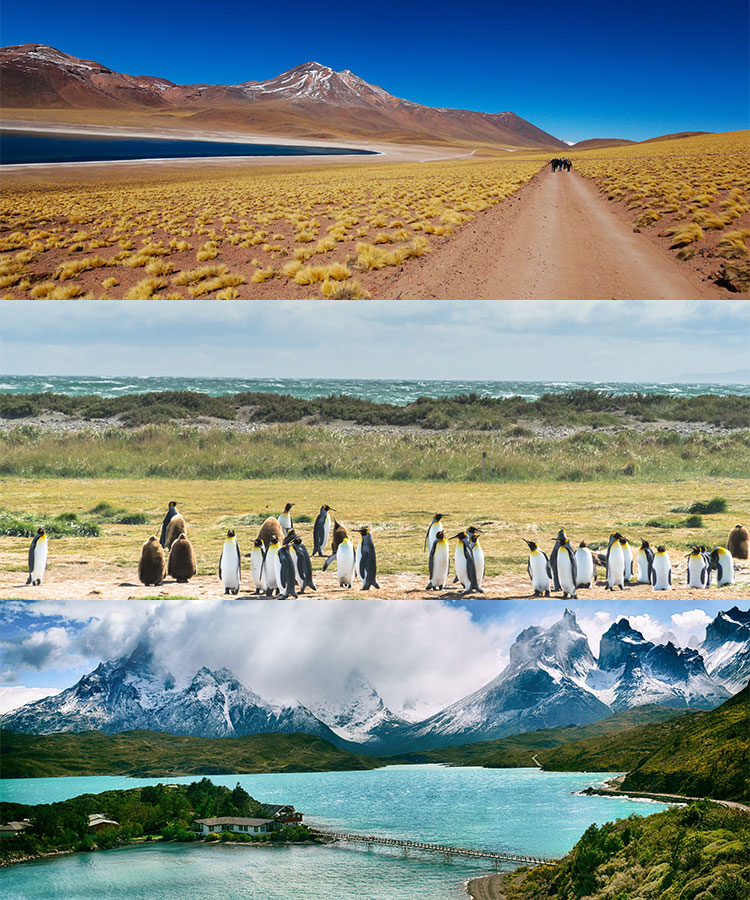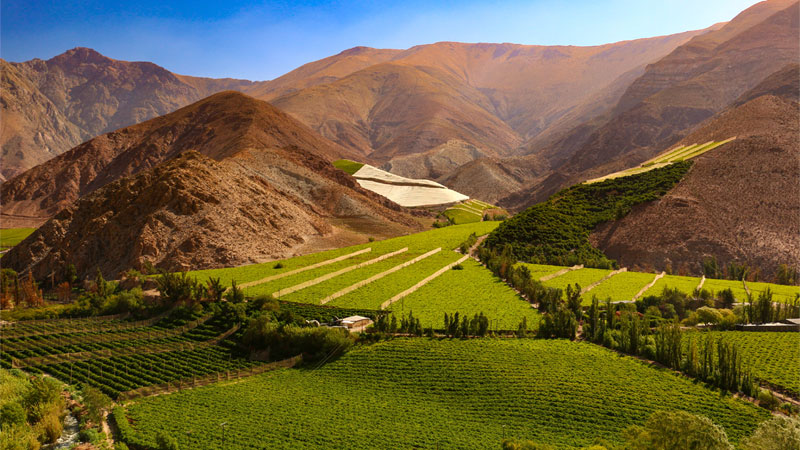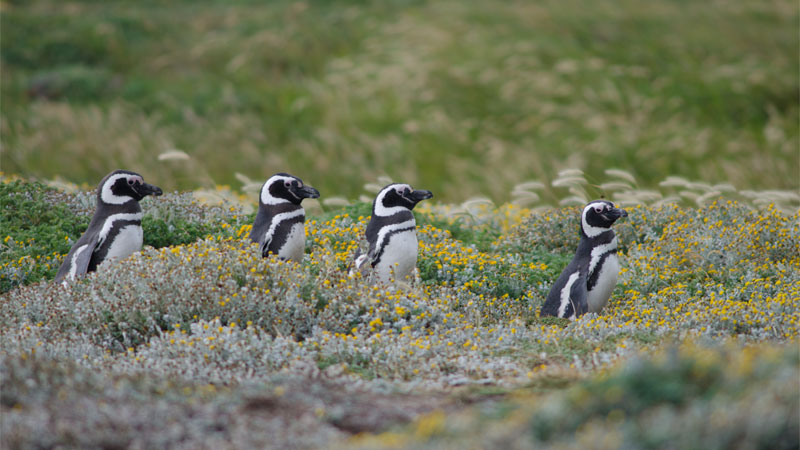
Wine drinkers so often get hung up on this idea of terroir, i.e., the climate, weather, geography, geology of a vineyard, but there is so much more that contributes to a wine than just the land, the water running through it, and the air passing over it. Also intrinsically linked are the various flora and fauna — the array of plants, animals, fungi, and microorganisms — that make up a vineyard’s ecosystem. This biodiversity — and keeping it balanced and maintained — is an important part of making exemplary wine, as well as key to ensuring the health of both the land and the community that surrounds it.
Chile is a country that knows well the importance of biodiversity in winemaking. With mountains, fertile valleys, dense forests, mineral-rich deserts, a seemingly endless coastline, glaciers, and volcanoes, its landscape is a wellspring of ecological variety.
A committed steward of the environment, over 75 percent of the wine industry in Chile has agreed to conservation practices that are part of a national Sustainability Code. Safeguarding biological diversity and respectfully managing the land — by responsibly working with natural resources such as soil and water, committing to protecting the environment, and being socially responsible— nurtures these bio-networks and supports the long-term viability of vines.
In just a decade, Chile has become an international standard-bearer for these practices, while also producing some of the best wine in the world. By minimizing impact and maintaining high social, environmental, and quality standards, Chilean wine has proven to be diverse, sustainable, and a delight to drink.
A Place Like No Other
One of the many interesting aspects of Chilean wine is its dramatic terrain and varied climates. Covering much of its Northern Zone is the Atacama Desert, the driest in the world; its Central Zone has a Mediterranean climate ideal for growing grapes; the Southern Zone is rich with vegetation, containing some of the world’s oldest and largest trees. Chile has sub-polar forests, ice fields, shrublands, salt flats, and lagoons, among other environs. Much of Chile’s plant and animal life can’t be found anywhere else, and its exceptional concentration of indigenous species are irreplaceable, meaning that conserving them is hugely important for securing global biodiversity.
While all three zones support viticulture, it is the Central Zone where the majority of wine production occurs and where more than half of Chile’s native forest and scrub are found, including, among others, sclerophyll and deciduous broadleaf formations, which are extremely rare in other parts of the world. This area is of particular interest when it comes to conservation. With almost the entirety of the county’s vineyards, many wineries certified by Wines of Chile’s Sustainability Code have a large extension of these ecosystems in their fields, around their vineyards. These growers are working to better understand these ecological communities, not only considering their impact on grape production, as far as the availability of water and native pests, but also the importance of conserving these natural resources, which are valuable in their own right.
With wine as one of its most important agricultural exports, Chile continues to move the ball forward with its wineries making great strides toward more innovative practices in the vineyard, the winery, and the community, making a commitment to the land and the people to elevate Chilean wine around the globe.
The Vineyard as Ecosystem
A healthy vineyard includes a variety of birds, insects, mammals, etc. that support vine health and survival. Successful wine-growing relies on various biome functions—natural pest control, soil support, and climate regulation—that can be supported by land management practices.
Chilean wine growers have adopted many practices to encourage greater ecological diversity, including using forest strips to allow movement of species; creating habitats that attract birds or insects to support natural pest control; eradicating invasive species; and working with native plants for water and soil protection. Some wine growers, such as Cono Sur, which is internationally recognized as a leader in sustainability, have used geese to control grape-eating beetles. Some use chickens to eat vine pests like the weevil or have introduced plants that attract native bee species. Dogs can also play a role in the health of a vineyard: Those with sheep may also employ a herder, like a sheepdog or Border Collie, to help keep the flock together so they can do their weeding, while the vigilant Great Pyrenees may be used to deter any predators. Odfjell Vineyards, which has been committed to preserving and promoting biodiversity since first planting vines in Alto Maipo, uses bees and apiculture to help a maintain natural balance, and even horses, which help prevent soil-compaction, to manage its organic and biodynamic vineyard. These holistic approaches help manage and support the vineyard and beyond.
The Importance of Biodiversity
Beyond its importance in a vineyard, biodiversity can also be a key ally against climate change and other broader environmental concerns. Every organism, no matter the size, plays an important role in the overall success of that environment.
As part of Chile’s Sustainability Code, growers follow a framework of practices — in the vineyard, placing an emphasis on the handling of natural resources and preventing soil erosion; in the winery, working on water management, energy efficiency, and recycling; and in the community, collaborating with and showing respect for the people who make wine and ensuring good working conditions and business ethics — to honor the natural origins of wine and to work viably.
By approaching winemaking in this way, recognizing the links between land and people, understanding how profoundly connected the wellbeing of one system is with another, committing to balancing a complex wine-growing ecosystem, Chile has come to the fore as a not only a champion of biodiversity, but also a producer of world-class sustainable wines.
This article is sponsored by Wines of Chile. Taste the Unexpected.



